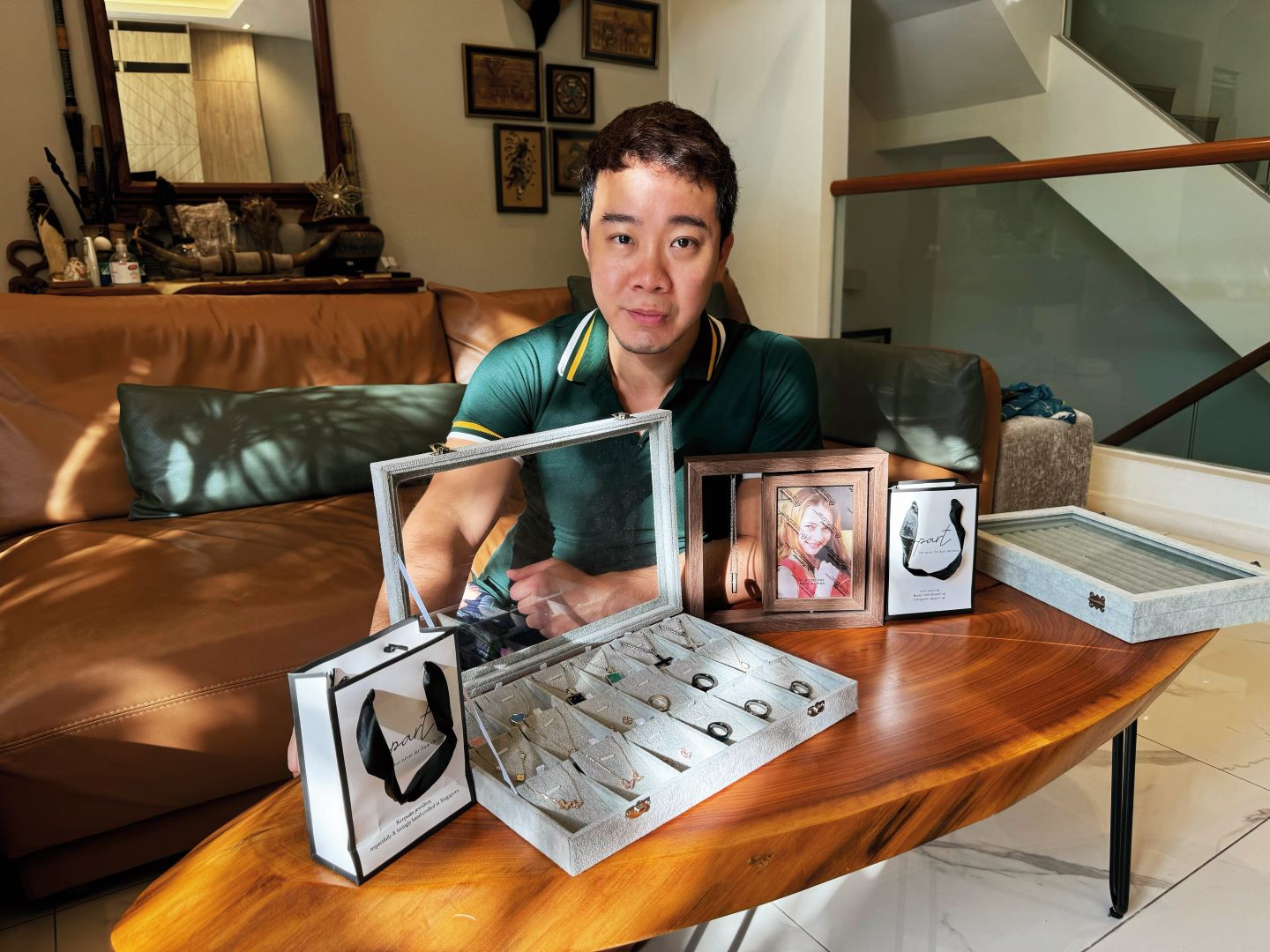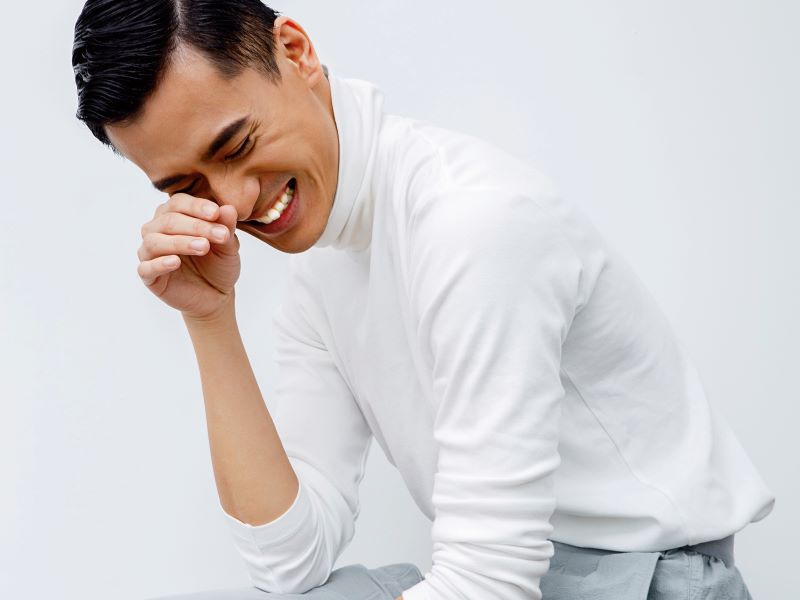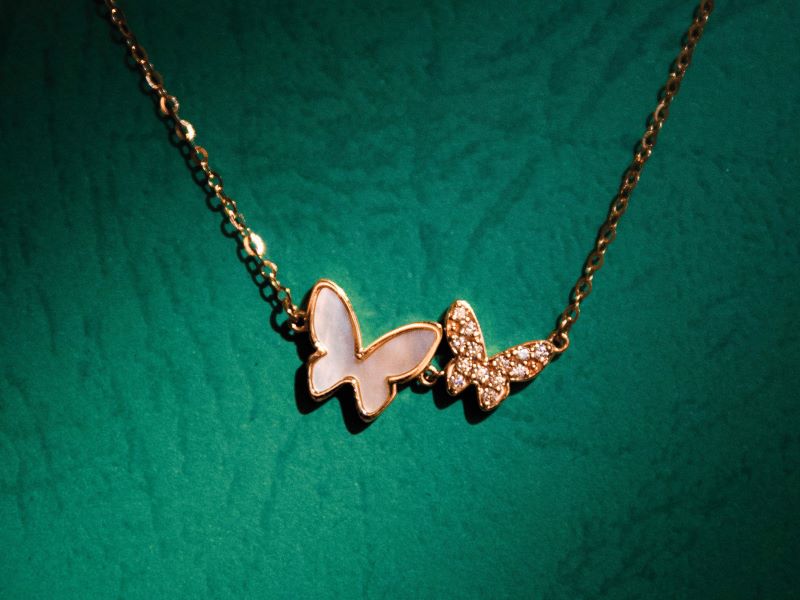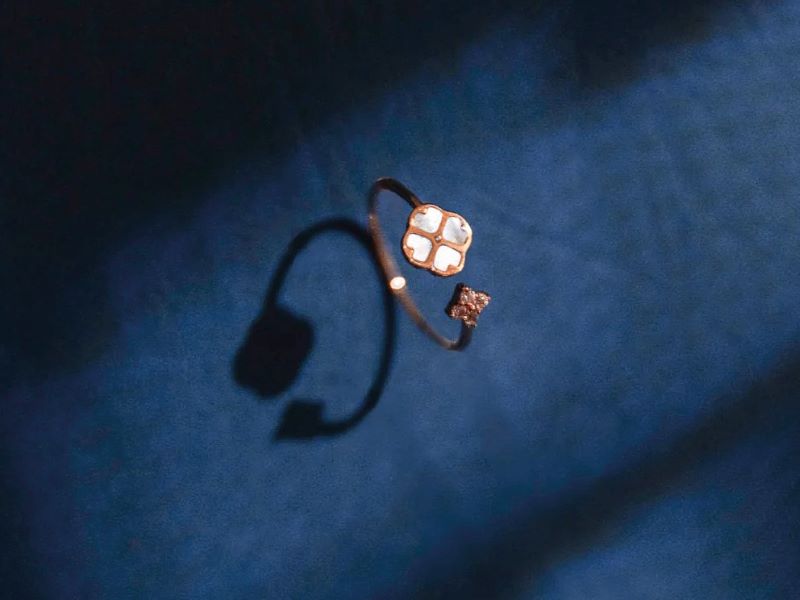
Founder Andrew Lim started the business to keep the memories of loved ones close to the heart (Photo: Andrew Lim)
Throughout history, humans have devised various methods to commemorate those who have passed on. From constructing great structures like the Egyptian pyramids and the Taj Mahal in India, to culturally unique funeral customs such as mummification and Tibetan Buddhist bya gtor or “sky burials”, the ritual of honouring the dead and grieving has taken on many forms over the centuries, never failing to fascinate us.
With the vast advancement of modern science and technology, several newfound techniques have become popular choices in recent years — one being to turn remains, typically ashes or hair, into valuable objects like diamonds and wearable jewellery. While this has been increasingly trendy in the West, where many see it as a meaningful and beautiful way to preserve late loved ones, most Eastern communities are still hesitant to partake, preferring to leave the dead to rest undisturbed.
Additionally, while cremation is the preferred practice in Asia, it is not common to display ash urns in the home but rather store them in a columbarium that is visited every once in a while to pay one’s respects. While the distance and periodical homage paid can help the living let go and return to their regular lives, it can also deepen longing and even lead to the eventual neglect of these memorial sites.
In the midst of this shifting landscape is Apart, a small business crafting custom keepsake jewellery made with the ashes, hair or fur of deceased loved ones. Originally established in Singapore by photographer and entrepreneur Andrew Lim, the brand has planted Malaysian roots with designer Adrien Kent at the helm.
co7a4641.jpg

Having met Lim while appearing on Season 7 of the interior design reality show, The Apartment, Kent describes his role in Apart’s international expansion as “a sign” that the two were meant to meet for a greater purpose. “We were roommates during filming and bonded very quickly. Even after the show finished airing, we still kept in contact,” he mentions. Being a “driven person looking to diversify [his] career paths” and a dedicated pet owner himself, saying yes to Lim’s extension plan was an easy call.
The process starts with the client reaching out to the team with their request after which each element of the piece, from its design to the material used, is carefully discussed to accommodate their taste and budget. “We have rings, bracelets and necklaces, ranging from materials such as black ceramic, tungsten, sterling silver and 18-carat rose gold,” Kent explains. Alternatively, urn frames can also be customised for those who do not wish to wear jewellery. The ashes or hair are passed over, and within four to six weeks, the piece is meticulously and respectfully made. Each step documented for the customer’s peace of mind.
Apart currently offers four main lines from which clients may select their designs. In the Hope collection, the ashes are infused into the jewellery and sealed under a four-leafed clover motif cut from iridescent mother-of-pearl representing faith, hope, love and luck that transcends the physical world. The Freedom pieces highlight butterflies, an insect widely perceived to symbolise metamorphosis and spirits of loved ones. Lastly, the items from Purity and Eternal feature crushed opals or pearls topping or mixed in with the ashes.
freedom_bracelet.jpg

Now, ornaments of this nature are not as far-fetched as one may think. “Urns as well as capsules, beads and pendants have been rather common since the dawn of cremation parlours,” Kent mentions, though he recognises that this disposition method is not normalised in all cultures. Thus, the designer also aims to innovate existing trends and open eyes to the many alternative forms of memorialisation. “What I wish to educate others about is that [keepsake jewellery] does not even have to require cremation, as it can also involve putting hair, fur or personal items like clothing into these pieces.”
While accessories like these have yet to become commonplace, family heirlooms, particularly finery, have been a core element of Asian bereavement traditions for ages. These wearables are handed down through many generations, and enable inheritors to connect and remember their ancestors through a tangible object.
hope_ring.jpg

However, the practice of making these birthrights has slowed down in recent years both due to increasing prices and the general belief that these items need to be several decades-old to be worth bequeathing. Apart begs to differ. “I think when people say ‘heirloom’, they believe it means expensive and has been passed down through generations,” Kent says. “But with Apart, our current generation can honour their lost loved ones, and create new heirlooms for the coming generations.”
As the brand is still in its early stages, Kent hopes to first focus on educating people about keepsake treasures and eventually expand Apart’s services throughout Malaysia. Though certainly not for everyone, Apart’s services are based on the same belief as any other funeral rite — to allow those still living to hold on to the memory of the departed and ease the mourning process, particularly in the cases of premature or unfortunate deaths. Furthermore, each piece of jewellery marks a distinctive point in modern cultural evolution and serves as an indication of how technology and innovation continue to seep into our lives in meaningful ways.
This article first appeared on June 3, 2024 in The Edge Malaysia.


